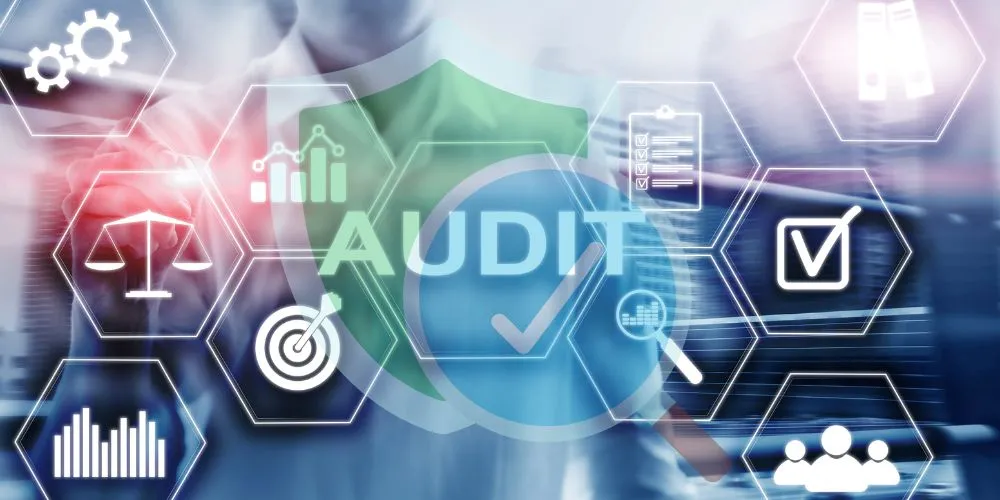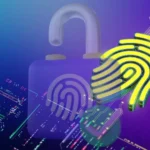Security audits are a cornerstone in cybersecurity, serving as a systematic and thorough examination of an organization’s information systems, policies, and practices. This article delves into the comprehensive domain of security audits, exploring their fundamental principles, diverse methodologies, key advantages, notable applications, and the challenges they address within the dynamic landscape of digital security.
Unveiling Security Audits
Security audits involve a meticulous review and assessment of an organization’s security measures to identify vulnerabilities, assess compliance with established security policies, and ensure the overall resilience of its digital infrastructure. These audits are crucial for maintaining sensitive information’s confidentiality, integrity, and availability, ultimately fortifying an organization against potential cyber threats.
Key Components of Security Audits
Understanding the key components of security audits is essential for comprehending their scope and impact:
- Risk Assessment: The audit process often begins with a comprehensive risk assessment, identifying potential threats, vulnerabilities, and the potential impact of security breaches on the organization. This step provides a foundational understanding of the organization’s risk landscape.
- Policy Compliance: Security audits assess the organization’s adherence to established security policies and regulatory requirements, ensuring protocols are in place to safeguard sensitive information. It ensures that the organization aligns with industry standards and legal requirements.
- Vulnerability Scanning: Utilizing specialized tools, security audits include vulnerability scanning to identify weaknesses in networks, systems, and applications that malicious actors could exploit. This proactive measure is crucial for preemptively addressing potential points of exploitation.
Methodologies of Security Audits
Security audits employ various methodologies to evaluate and enhance an organization’s cybersecurity posture:
- Internal Audits: Internal audits are conducted by the organization’s internal teams or auditors. They assess the internal controls, policies, and procedures to ensure compliance with security standards. Internal audits provide an insider’s perspective and knowledge of organizational intricacies.
- External Audits: External audits involve third-party auditors who evaluate an organization’s security measures unbiasedly. This external scrutiny provides an additional layer of assurance and brings an independent assessment to ensure objectivity.
- Compliance Audits: Compliance audits ensure that an organization adheres to industry-specific regulations, such as GDPR, HIPAA, or ISO standards. Non-compliance can lead to legal repercussions and reputational damage, making compliance audits essential for regulatory adherence.
Advantages of Security Audits
The adoption of security audits brings forth a multitude of advantages, fortifying the overall security posture and resilience of digital environments:
Proactive Risk Mitigation
One of the primary advantages of security audits is their role in proactive risk mitigation. Organizations can address potential threats by identifying vulnerabilities and weaknesses before malicious actors exploit them. This proactive approach is critical for staying ahead of emerging cyber threats.
Regulatory Compliance Assurance
Security audits play a crucial role in ensuring regulatory compliance. Adhering to industry-specific regulations avoids legal consequences and enhances the organization’s reputation and trustworthiness. Compliance assurance is vital for maintaining integrity and credibility.
Enhanced Incident Response Preparedness
Security audits contribute to improved incident response preparedness. Organizations can refine and enhance their capabilities by identifying weaknesses in incident response plans to mitigate the impact of security incidents. This heightened preparedness ensures a swift and effective response to potential security breaches.
Stakeholder Confidence and Trust
Regular security audits enhance stakeholder confidence and trust. Demonstrating a commitment to robust cybersecurity practices reassures clients, partners, and investors that the organization is proactive in safeguarding sensitive information. Building and maintaining trust is crucial for sustained success and positive relationships.
Applications of Security Audits
Security audits find applications across diverse industries and organizational structures, influencing how organizations assess and strengthen their cybersecurity measures:
Corporate Networks and IT Infrastructure
In the corporate landscape, security audits are applied to assess the security of networks, servers, and IT infrastructure. It ensures that critical business operations remain secure and resilient against cyber threats. The comprehensive evaluation of IT systems is vital for maintaining operational continuity.
Financial Institutions and Banking Systems
In financial institutions, security audits are crucial for safeguarding sensitive financial data and ensuring the integrity of banking systems. Compliance with financial regulations and protection against cyber threats are paramount. The financial sector’s reliance on secure digital transactions makes security audits indispensable.
Healthcare Information Systems
Security audits play a vital role in the healthcare sector by evaluating the security of electronic health records and medical information systems. It ensures the confidentiality and integrity of patient data, critical for maintaining trust and adhering to healthcare privacy regulations.
E-commerce Platforms and Customer Data
For e-commerce platforms, security audits are essential to protect customer and payment information and ensure the secure functioning of online transactions. Compliance with data protection regulations is critical in this context. E-commerce platforms handle vast amounts of sensitive customer information, prioritizing security audits.
Challenges in Security Audits
While the advantages are evident, the practice of security audits faces its challenges. Addressing these challenges is important for realizing the full potential of security audit efforts:
Evolving Cyber Threat Landscape
The dynamic nature of the cyber threat landscape poses challenges for security audits. New and sophisticated threats emerge continually, requiring organizations to adapt their audit methodologies to avoid potential risks. The ability to anticipate and respond to evolving threats is central to the effectiveness of security audits.
Resource Intensiveness
Conducting thorough security audits can be resource-intensive, requiring time, skilled personnel, and specialized tools. Organizations may face challenges in allocating the necessary resources for comprehensive audits. Resource constraints can impact the frequency and depth of security audits, potentially leaving vulnerabilities unaddressed.
Complexity in Cloud Environments
The shift to cloud environments introduces complexities in security audits. Assessing the security of cloud-based infrastructure, data storage, and applications requires a nuanced approach and specialized expertise. Security audits must adapt to the unique challenges posed by cloud environments to provide accurate and meaningful assessments.
Human Factors and Insider Threats
Human factors, including unintentional errors and insider threats, pose challenges for security audits. Mitigating risks associated with human behavior and ensuring insider threats are detected remain ongoing challenges. The human element introduces difficult variables to predict and control, making addressing human-related risks in security audits essential.
Future Trends in Security Audits
As technology continues to evolve, future trends in security audits point toward advancements that further enhance their capabilities:
Automation and Artificial Intelligence Integration
Integrating automation and artificial intelligence (AI) in security audits is a growing trend. Automated tools can streamline routine tasks, and AI can analyze vast datasets to identify patterns indicative of potential threats. This trend aims to increase the efficiency and accuracy of security audits.
Continuous Monitoring and Threat Intelligence Integration
The shift toward continuous monitoring involves real-time assessment of security measures. Integrating threat intelligence allows organizations to respond to emerging cyber threats and vulnerabilities proactively. This continuous and adaptive approach enhances the organization’s ability to stay ahead of evolving threats.
Blockchain for Audit Trail Security
Blockchain technology is increasingly being explored to secure audit trails. The immutable and decentralized nature of blockchain can enhance the integrity and transparency of audit logs. Blockchain’s cryptographic features provide additional security to audit trails, ensuring their reliability.
Red Team Testing for Real-World Simulations
Red team testing involving simulated cyber-attacks is gaining prominence for real-world security simulations. This approach gives organizations insights into how well their defenses can withstand sophisticated attacks. Red team testing goes beyond theoretical assessments, offering practical insights into an organization’s preparedness.
Conclusion
Security audits serve as a crucial linchpin in the overarching strategy to fortify digital security, offering organizations a comprehensive and proactive means of identifying vulnerabilities and bolstering resilience. Their role in risk mitigation, compliance assurance, and incident response preparedness is pivotal in an era where cyber threats continually evolve in sophistication. While challenges persist, ongoing advancements and future trends indicate a dynamic and promising future for security audits, with applications extending into new frontiers of technology, automation, and threat intelligence integration. The responsibility to implement and evolve security audit practices rests on organizations, cybersecurity professionals, and auditors, urging them to embrace innovative approaches for a secure digital future.










